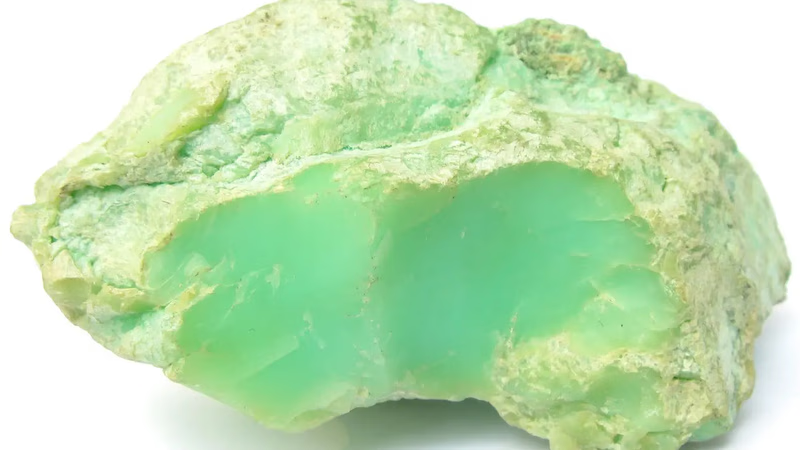
Explore the beauty of jade in Middle Eastern trade markets.
Jade holds immense cultural significance in many ancient civilizations, particularly in East Asia. It has been revered and considered a symbol of status, spirituality, and heavenly qualities in these cultures. For example, in Chinese culture, jade has been highly valued and associated with virtues such as wisdom, purity, and immortality. Jade has been believed to possess protective qualities and the ability to ward off evil spirits. It was considered a powerful talisman that provided spiritual protection to its wearer. This association with protection and divine qualities contributes to its association with the heavens.
In addition to green jade, it is also found in white, yellow, blue and gray. It is interesting to know that the royal jade found in Myanmar is the most valuable known form of jade that has an emerald green color. The first jade carvings were found in China and date back to the Neolithic period, around 5,000 BC. In China, jade is used for good luck, longevity and love. Jade is also said to be a stone of peace and friendship and has anti-stress and anti-anxiety properties. It is also effective in treating seizures, lung diseases and skin diseases. In the eastern countries, jade is a symbol of peace and tranquility.
Jade has been attributed with various healing properties in traditional medicine and alternative healing practices. It is believed to bring balance, harmony, and good fortune to its wearer. The association of jade with positive energy and well-being reinforces its heavenly symbolism. The color, transparency and texture of the stone is one of the most important factors in determining the price of jade. The darker the color of the jade, the higher its value and price. There is a high probability that jade enthusiasts will make a mistake and buy counterfeit stones. With the naked eye, it is difficult to distinguish low-quality and painted stones, which, unfortunately, have a large number of counterfeit stones. In the classification system of this stone, "Imperial Jade" is known as "Jade A".
"Jade B" is a stone that is boiled in a strong acid to remove contaminants (e.g. iron oxide) from the grooves in it, and finally its cracks are covered with wax or synthetic resin. "Jade C" has a very low quality and is completely dyed. Most stones are transparent in color and are sold as green jade in west of Asia. That's why Roland Ohel advises: "Only by consulting with a good jeweler or broker can you be safe from buying counterfeit gemstones." In addition, like other gemstones, the identity card of the stone can confirm its validity.
Jade has been regarded as a stone that bridges the gap between the physical and spiritual realms. It is believed to enhance spiritual growth, enlightenment, and connection with higher realms of consciousness. This connection to the spiritual realm and its ability to elevate one's consciousness further associate jade with heavenly qualities. Jade is renowned for its beauty and rarity. Its vibrant green color and smooth texture have captivated people for centuries. The fact that it is a naturally occurring gemstone, formed over thousands of years, adds to its allure and the perception of its heavenly origins.
-
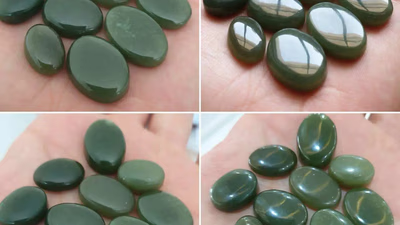
Myanmar"s Hpakant region is renowned for its high-quality jadeite, often called "Burmese jade. " This area has been a significant source of jade for centuries. Guatemala"s Motagua River Valley produces vibrant green jadeite, valued in the international market. China, with its rich jade culture, is known for nephrite jade from regions like Xinjiang and Hetian. Canada has emerged as a notable producer of nephrite jade, particularly in British Columbia. New Zealand"s South Island is famous for pounamu, which holds cultural significance for the Māori people. Australia and Kazakhstan also have significant jade deposits, with Australian jade known for its deep green color. The United States has nephrite deposits in Alaska and California, with notable locations like Big Sur.
Globally, much of the world"s jade is found around the Pacific Ocean rim due to geological processes. Countries like Russia and Central American nations also contribute to the global jade market, producing unique varieties prized for their colors and craftsmanship.
-
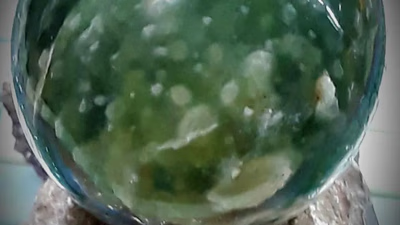
Jade is revered for its believed properties that promote balance, harmony, and well-being. It is thought to align the mind, body, and spirit, fostering a peaceful existence. The stone is associated with wisdom and clarity, enhancing mental faculties and decision-making abilities. Jade"s energy is said to support rational thinking and problem-solving while removing negative forces from environments. Green and purple jade are linked to the heart chakra, promoting emotional stability and deepening breathing. Additionally, jade is believed to strengthen memory and interpret dreams when placed under a pillow. Many consider jade a protective stone that shields against negative energies while attracting success and prosperity. Its calming influence helps alleviate anxiety and stress, encouraging emotional balance.
Furthermore, jade is thought to purify the body, supporting physical health and vitality by aiding the immune system. It also plays a role in spiritual growth by enhancing intuition and facilitating spiritual awakening. While these properties are rooted in traditional beliefs, many individuals find personal significance in incorporating jade into their lives. "
-
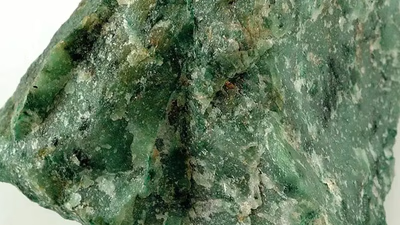
Jade is a durable gemstone but can be damaged by harsh chemicals, prolonged water exposure, and rough surfaces. To maintain its quality, avoid using household cleaners and remove jade jewelry during activities that may cause damage. For cleaning, use a soft cloth or brush with warm water and mild soap. Store jade in a soft pouch to prevent scratches and avoid extreme temperatures to prevent cracks. Jade consists of nephrite and jadeite, with nephrite being less valuable due to its lower hardness. Professional cleaning is recommended for intricate pieces or significant dirt buildup.
-
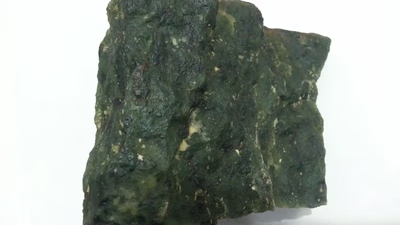
The price of green jade varies significantly based on factors such as color, transparency, purity, weight, and extraction location. Prices can range from $1 to $1 million depending on these attributes. The most valuable jade is sourced from Myanmar, with annual trading occurring in major centers like Rangoon and Hong Kong. In these markets, jade is sold in various forms including carved jewelry and antiques. The quality of jade is crucial; uncut or unprocessed pieces pose risks as they may be misrepresented. For instance, Myanmar green jade can cost between $5 to $2,500 per gram, while Khorasani jade from Iran is priced below $1 per gram. Black jade generally has a lower price point than green jade, with values around $2-3 per gram. Antique jade pricing is complex and requires expert evaluation due to factors like age and historical significance. Raw jade stones are often sold by weight; in Iran, prices for raw jade can be under $50 per kilogram but vary widely based on quality.
-
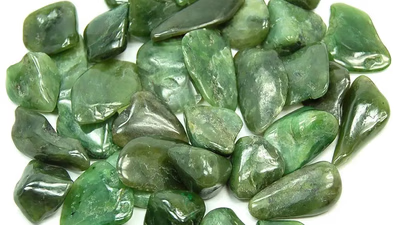
Visual examination is the first step in jade stone detection, focusing on characteristics like color, transparency, and texture. Experts compare stones to known samples and assess their overall appearance. Density and hardness measurements help distinguish between jadeite and nephrite, with jadeite being harder. The classification system categorizes jade into types A (Imperial), B (treated), and C (low quality). Misidentification can occur as jade resembles emeralds but differs in color variety and market value. Jade"s historical classification evolved from a single mineral to two distinct types recognized by mineralogists. Advanced techniques such as refractive index measurement, spectroscopy, and X-ray diffraction are essential for accurate identification. These methods help detect synthetic or treated stones, while UV light can reveal fluorescence patterns unique to jadeite.
Expertise from gemologists is crucial for authenticating jade due to the high market value of genuine specimens. Understanding these detection methods is vital for buyers to avoid counterfeit stones. "
-
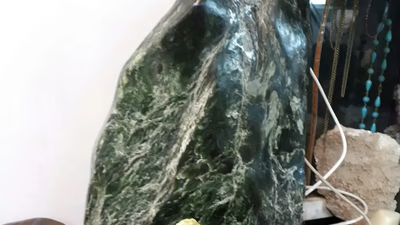
Jade quality is primarily determined by color, transparency, texture, and luster. Jadeite and nephrite exhibit a variety of colors, with vibrant hues being more desirable. Jadeite"s value increases with its transparency; high-quality jadeite is translucent, while nephrite is typically opaque. Jade is categorized into several grades: Category A represents high-quality jade with excellent color and transparency; Category B involves surface treatments that enhance appearance but compromise purity; Category C includes industrially dyed stones; Category B-C combines both methods; and Category D features a composite structure with plastic. Texture plays a crucial role in valuation, with smooth surfaces free from blemishes being preferred. Luster varies from matte to glassy, with bright reflections indicating higher quality. The craftsmanship involved in carving also significantly impacts jade"s value, as intricate designs and expert techniques enhance desirability.
-

Jade is a gemstone with deep cultural significance, particularly in East Asia, where it symbolizes status, spirituality, and protection. In Chinese culture, jade is associated with virtues like wisdom and purity, believed to ward off evil spirits and provide spiritual protection. Various colors of jade exist, with the most valuable being the emerald green variety from Myanmar. Historically, jade carvings date back to 5,000 BC in China and have been used for good luck and healing properties. The value of jade is determined by its color, transparency, and texture; darker shades command higher prices. However, buyers must be cautious of counterfeit stones that are difficult to distinguish from genuine ones. The classification system includes "Imperial Jade" (Jade A), treated stones (Jade B), and low-quality dyed stones (Jade C). Consulting a reputable jeweler is essential to avoid purchasing fakes.
Jade"s connection to spiritual growth and enlightenment enhances its appeal as a bridge between physical and spiritual realms. Its beauty and rarity have captivated enthusiasts for centuries. "







